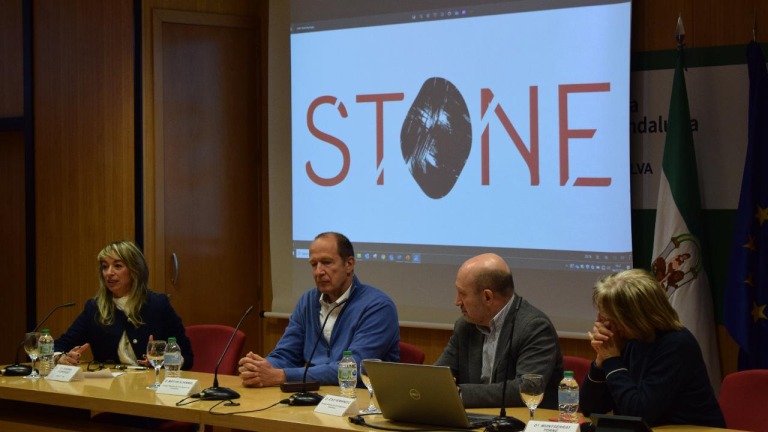12 de March de 2025
A new monitoring system developed under the STONE project can detect and anticipate underground movements hundreds of metres deep, significantly improving safety and sustainability in mining. The first results of this research, led by Atalaya Mining and CSIC research centres, Geosciences Barcelona (GEO3BCN-CSIC) and el Instituto de Geociencias (IGEO-CSIC-UCM) confirm an unprecedented scientific breakthrough in geotechnical surveillance.
After more than two years of work, the research team has demonstrated that combining satellite radar interferometry (InSAR) with underground deformation analysis techniques makes it possible to detect displacements at depths of over 500 metres—even before they become visible on the surface. This monitoring capability, applied to both the mining operation and the tailings storage facility, opens new possibilities for preventing risks associated with extractive activities.
The MINERVA platform integrates all the information gathered from conventional methods—such as inclinometers, piezometers, and geodetic points—with data obtained through these new techniques. “This system provides a margin of maneuver to implement preventive measures and prevent deformations from compromising the safety of people, infrastructure, or the environment, especially in geotechnically sensitive areas,” explains Susana Rodríguez, project director and Head of Geotechnics at Atalaya Mining.
To achieve this, the STONE project combines satellite radar interferometry (InSAR) and ambient seismic noise monitoring with traditional measurement tools. “This approach allows us to obtain data almost continuously—every 6 to 12 days with InSAR—or even in real-time, in the case of seismic noise,” says José Fernández Torres, a researcher at IGEO-CSIC-UCM.
Beyond improving underground surveillance, the use of artificial intelligence within the MINERVA platform has made it possible to determine the mine’s three-dimensional subsurface structure with high precision. “This analysis helps us identify areas of potential structural instability and uncover new geological opportunities,” says Montserrat Torné, lead researcher on the project at GEO3BCN-CSIC.
Beyond mining
The advancements achieved with MINERVA could have applications beyond the mining sector, in areas requiring strict ground stability monitoring, such as dams, ports, or nuclear power plants. Over the final year of the project, key developments will be completed to ensure these techniques become fully operational.
“Atalaya Mining is committed to innovation and to developing solutions that enhance safety and sustainability in mining,” says Enrique Delgado, General Manager of Atalaya Riotinto. According to Delgado, the progress made so far marks the beginning of a broader effort to expand this technology and explore new collaborations to apply it to other strategic sectors.

